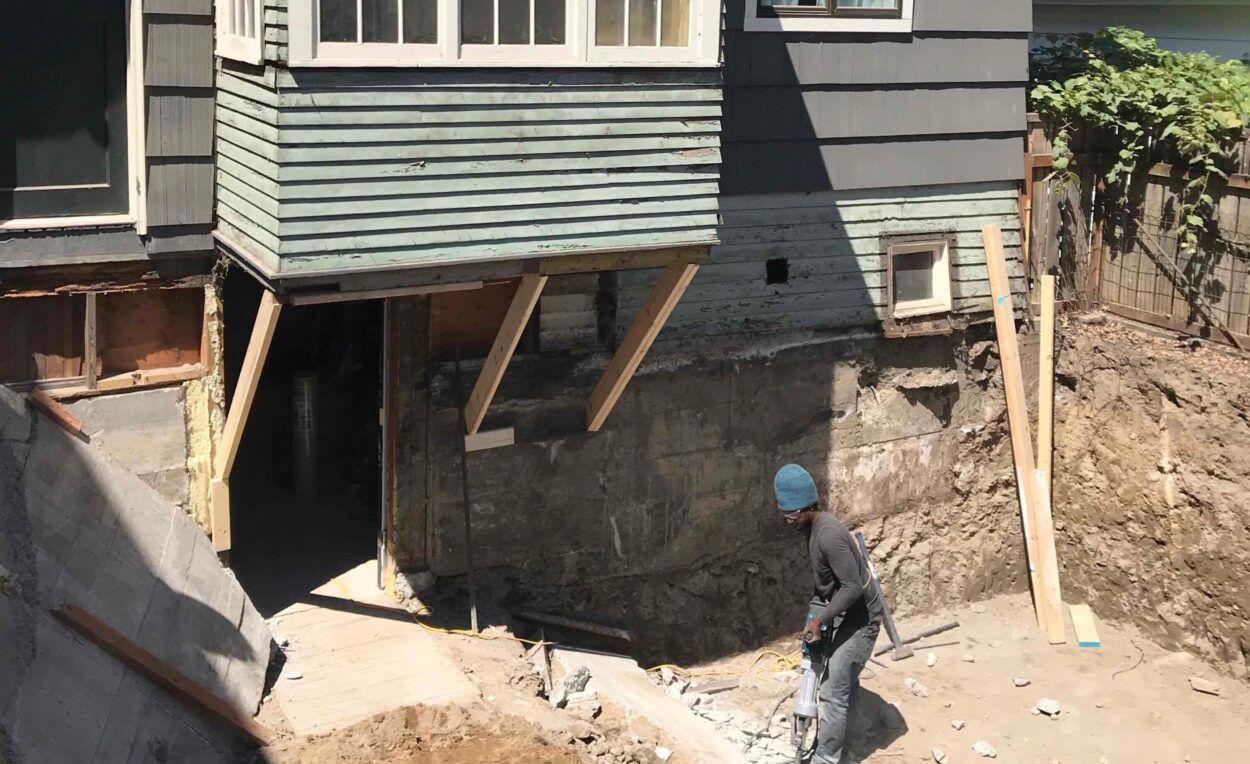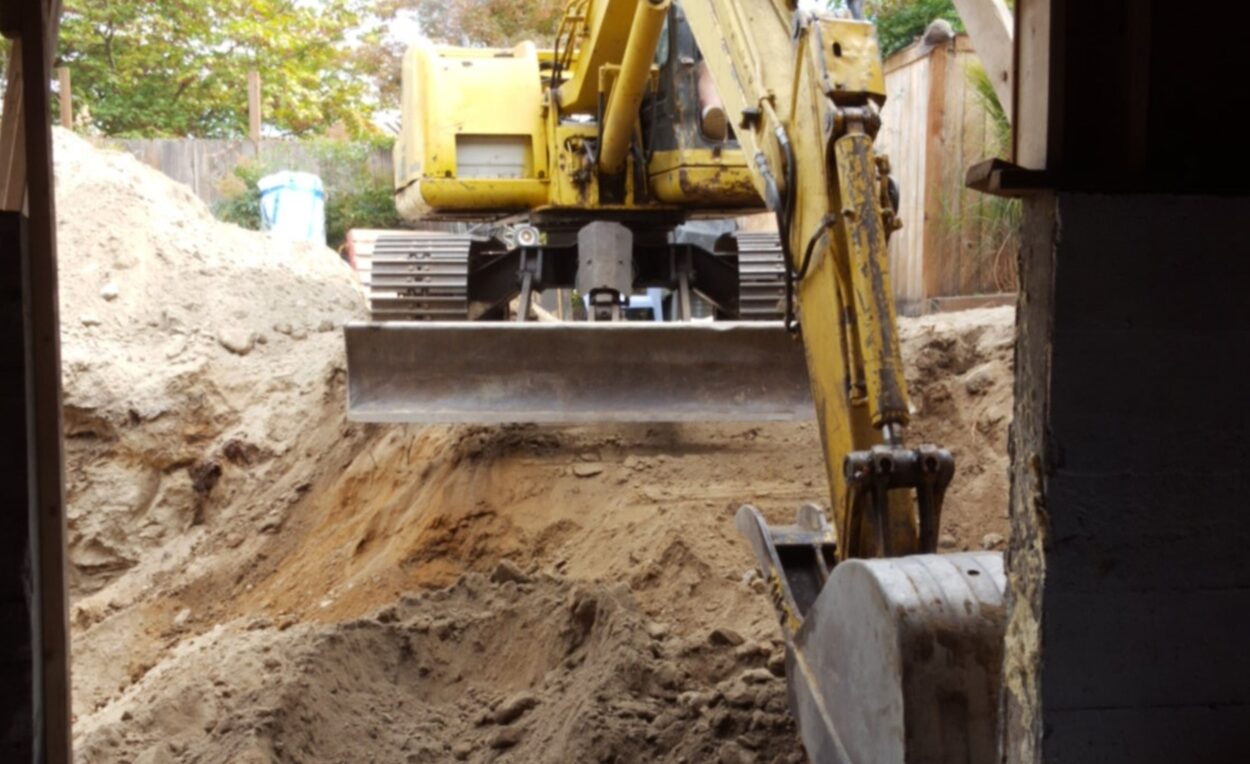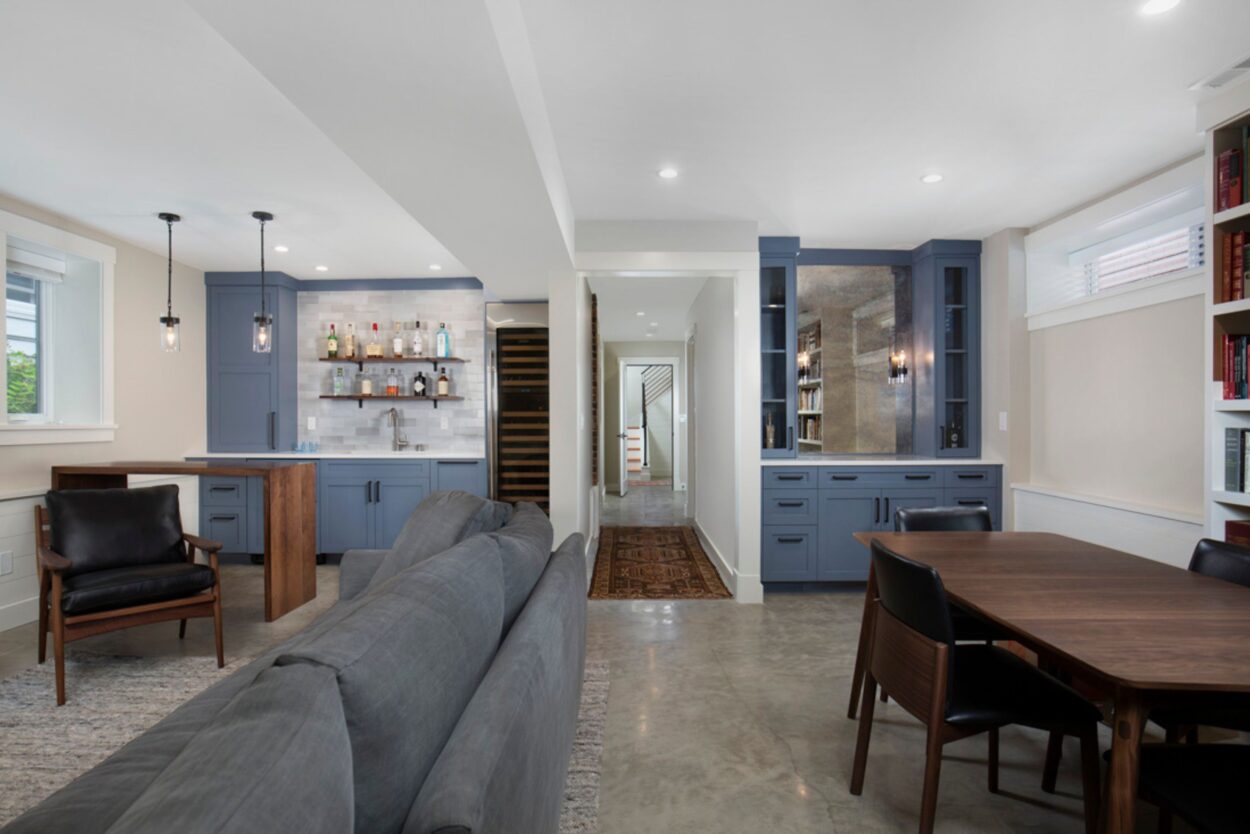Expanding Your Seattle Home with a Basement Dig Out
August 1, 2025
Seattle families often reach a point when their home starts to feel a little too small. A second child is on the way, grandparents are planning longer visits, a new job means working from home, or you simply want more room to spread out. Yet the idea of leaving a neighborhood you love feels impossible.
In a city where moving often means bidding wars and limited options, many homeowners start looking for creative ways to make the most of the space they already have.
One solution more and more people are considering is a basement dig out. By deepening an existing basement or crawl space, you can transform underused square footage into comfortable livable space without changing your home’s exterior or footprint. It’s a great way to grow into the house you already love, adding new bedrooms, a guest suite, or a bright playroom for the kids.
Before you decide if this is the right path for your family, it helps to understand how a dig out works, what makes it unique in Seattle, and the tradeoffs compared to other expansion options.
Understanding Basement Dig Outs
A basement dig out involves lowering the floor of an existing basement or crawl space to create full-height, livable space. In most cases, this means excavating two to three additional feet of soil and reinforcing the foundation so the new space meets modern safety and comfort standards. The goal is to transform an underused or inaccessible area into rooms that feel like a natural extension of the rest of your home.
Seattle’s housing stock makes this type of project especially appealing. Many older homes here were built with low basements or shallow crawl spaces that can’t be used as living areas without significant modifications. At the same time, strict zoning and height limits in many neighborhoods make “building up” or adding a second story challenging, or, in some cases, impossible.
By digging down, homeowners can often achieve a standard eight-foot ceiling, creating space that feels open and functional rather than cramped. This approach can sometimes double the usable square footage of your home!
The Process of a Basement Dig Out and What to Expect
Excavation and Structural Work
The first step is carefully removing soil in phases so the home’s foundation remains supported at all times. Crews reinforce or rebuild footings and walls as they go, ensuring the structure stays stable. This phased approach is slower than simply digging all at once, but it’s what keeps your home safe throughout construction.


Moisture and Drainage Planning
Seattle’s wet climate makes moisture control a top priority. In fact, most older homes in the area have at least some level of moisture intrusion into their basements, something that can be resolved during this process.
A typical dig out includes a perimeter footing drain, a sump pump, and waterproofing layers like vapor barriers or dimple board, a plastic sheet with raised bumps that create a small air gap between the soil and foundation walls. This gap lets any water that seeps through the soil flow down to the drains instead of soaking into the concrete.
These features keep groundwater out and help prevent long-term issues like mold or musty odors.
Ceiling Height and Livability
Most homeowners aim for at least eight-foot ceilings, which often requires lowering the floor by two to three feet. Incorporating daylight windows and thoughtful lighting design prevents the space from feeling dark or enclosed, creating rooms that feel like part of the main home rather than a basement.

Read more about this basement remodel.
Timeline and Living in the Home
A basement dig out is a noisy, dusty project. You can absolutely stay in the house, but it will still remain an active construction site for the duration of the dig out. There will be periods when the water or electricity is shut off and days when fumes or vibration make it less comfortable.
If your home has a furnace, dust and fumes from excavation equipment will travel throughout every floor of your home. Your builder should try to limit this with exhaust vents, and it can be managed further with HEPA filters or air scrubbers to reduce airborne particles, but nothing will remove everything completely. It’s important to be prepared for that level of effort and disruption.
Families with newborns, work-from-home schedules, or sensitive pets sometimes choose to relocate for part of the project.
Seattle Seasonality and Permits
Timing matters. Major excavation is best scheduled outside the rainiest months to avoid mud, safety issues, and additional permitting requirements for soil disturbance. In many cases, the city will classify a dig out as a “substantial alteration,” which can trigger updates to seismic and energy codes, which is a benefit in the long run for safety and efficiency.
Related article: What You Need to Know About Seattle’s Construction Remodeling Permits
Costs and Tradeoffs of Basement Dig Out Projects
Like any major home renovation project, a basement dig out is a significant investment, but the payoff can be a home that truly fits your family’s future.
The excavation and foundation phase alone can start around $100,000 or more, depending on your home’s size, soil conditions, existing foundation type or age, and ease of equipment access to the property. That cost covers digging down, reinforcing the structure, and preparing the space for finishing.
This phase often represents about a third or so of the total project cost. Full remodels (including framing, plumbing, electrical, and finishing) will be more depending on the size of the finished space, the complexity of the design, and the level of finishes you choose.
Dig Down vs. Lift Up vs. Build Up
Digging down is labor-intensive and often slower, but it preserves your home’s exterior and allows for foundation upgrades and seismic retrofitting.
Lifting the house tends to be faster and less expensive, with the lift alone costing as much as $20,000 less than the dig out excavation. The tradeoff is visible exterior changes, potential window misalignment, load limitations, and adjustments to stairs and siding. There is also a greater risk to your existing home as each corner of the house is lifted a few inches, one corner at a time. A reputable Seattle contractor should be able to guide you through these challenges with minimal headaches or disruptions to the overall project plan.
Building up can seem appealing, but it typically requires major work to the existing roof, ceilings, and internal systems. Rewiring, replumbing, and re-ducting the entire home are often unavoidable, making it more invasive and costly than many expect.
Related Article: Home Additions: Building Out vs. Building Up
A basement dig out could make the most sense for homeowners with a long-term plan in high-value Seattle neighborhoods. These projects can nearly double the usable square footage, strengthen the foundation, and improve seismic safety. Families committed to staying in their home for five to ten years or more often see the investment pay off in both daily life and resale potential.
Common Surprises and Misconceptions
Without an extensive background in excavation or home remodeling, it’s easy to make assumptions about basement dig out projects that don’t quite match reality. Knowing what’s ahead makes the experience smoother and avoids frustration.
For example, many homeowners think that it’s a quick or DIY-friendly project. Digging out a basement isn’t as simple as clearing dirt. Excavation is done in carefully planned phases to prevent the foundation from shifting or walls from buckling. Older Seattle homes often have a central support beam in the basement, which means excavation has to happen in sections around that beam while keeping the structure supported to avoid buckling. The process requires engineering expertise, specialized equipment, and strict adherence to safety standards well beyond what most DIY efforts can handle.

Even with thorough planning, a few discoveries could still catch you off guard. In an ideal world, public records for sewer and utility lines would be 100% accurate. But they aren’t always precise or up to date. This depends on how sophisticated your city’s mapping is, so adjustments may be needed during excavation.
Existing footings (the concrete base that supports your foundation walls) are sometimes smaller than expected, which can require additional reinforcement and concrete work. And while living in the home is possible, managing exhaust from excavation equipment, keeping dust contained, and navigating the noise and general disruption can be more challenging than you may anticipate.
On the positive side, many families are surprised by the hidden value of a dig out. Beyond the extra square footage, you often end up with a modernized foundation and a moisture-controlled environment that’s healthier for the house. These upgrades can extend the life of your home and add lasting comfort.
Read more about this Seattle crawlspace dig out.
Is a Basement Dig Out Right for You?
A basement dig out is often the right choice for families who love their home and want to stay in their neighborhood but need more room to breathe. For some, it’s about making space for a second child or creating a private suite for visiting parents. Others see the appeal in turning an unfinished basement into a guest room, playroom, home gym, or flexible living space that adapts as family needs change. The added peace of mind of a modernized foundation and improved seismic safety makes the investment feel even more worthwhile.
In Seattle, staying put often makes more sense than moving. Between competitive real estate prices, unpredictable inventory, and the disruption of leaving a neighborhood you love, expanding the home you already own can feel like the smarter long-term choice. Digging down has the added benefit of maintaining your home’s curb appeal. Modern homes and historic properties alike keep their exterior character, which isn’t always possible with a lift or upper-level addition.
Still, a basement or crawl space dig out isn’t the right fit for every home. High water tables or unusual structural layouts can make the project less feasible. If a house already has a strong foundation but little surrounding clearance for excavation, or if the property is extremely tight against neighboring structures, other solutions might be more practical. A full evaluation by an experienced builder is the only way to know for sure.
Choosing a Builder for Your Basement Dig Out
Expanding downward can be the difference between feeling cramped and feeling settled in the home you love. A well-planned basement dig out adds usable space, strengthens the foundation, and makes your house more adaptable for the next phase of life.
Harjo Construction has guided Seattle families through these complex projects with a focus on safety, livability, and lasting value. If you’re ready to see what’s possible under your own home, schedule a consultation with our team and start planning your future space.